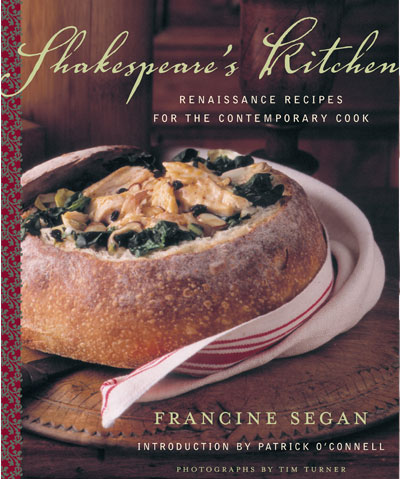Shakespeare's Kitchen
Renaissance Recipes for the Contemporary Cook
Most chapters in Shakespeare's Kitchen showcase a particular Elizabethan cookbook writer. In the Basics Chapter, you will meet cookbook author, poet, and inventor, Sir Hugh Platt who was knighted by King James I for his innovations in agriculture. In the Dessert Chapter you'll get to know Ms. Sarah Longe who shares recipes enjoyed by Queen Elizabeth and King James and in the Appetizer Chapter you will meet Gervase Markham whose 1615 cookbook begins: "eating and drinking are a very pretty invention." Allow me to introduce you to these wonderful Elizabethan cooks, their recipes, and the foods and dining customs of 16th and 17th Century Europe as we journey back to Shakespeare's England and back to our own culinary roots.

Saturday, May 8, 2004
"It was hard to miss the peacock in the ballroom of the Pierre Hotel…but the main attraction on Monday night…was the food, all updated versions of Elizabethan recipes by Francine Segan, author of Shakespeare's Kitchen: Renaissance Recipes for the Contemporary Cook (Random House, 2003) and the culinary advisor for the evening."

April 2, 2004
"Ms. Segan, like some historically minded chefs and cookbook authors, is willing to sacrifice some authenticity for popular appeal. In a recipe for Cornish game hens with sage she instructs readers to use an oven rather than boil the meat in a cheesecloth. She also substitutes marjoram for the herb hyssop, popular in the Tudor era but hard to find in the U.S. these days. Sometimes it takes more than switching a few spices to save a dish from the culinary compost heap. In her recipe for "courage tart," a sweet-potato-and-apple pie widely used as an Elizabethan aphrodisiac, Ms. Segan excluded sparrow brain. And she decided against a chapter on how to cook "head of beast."
» Buy This Book
